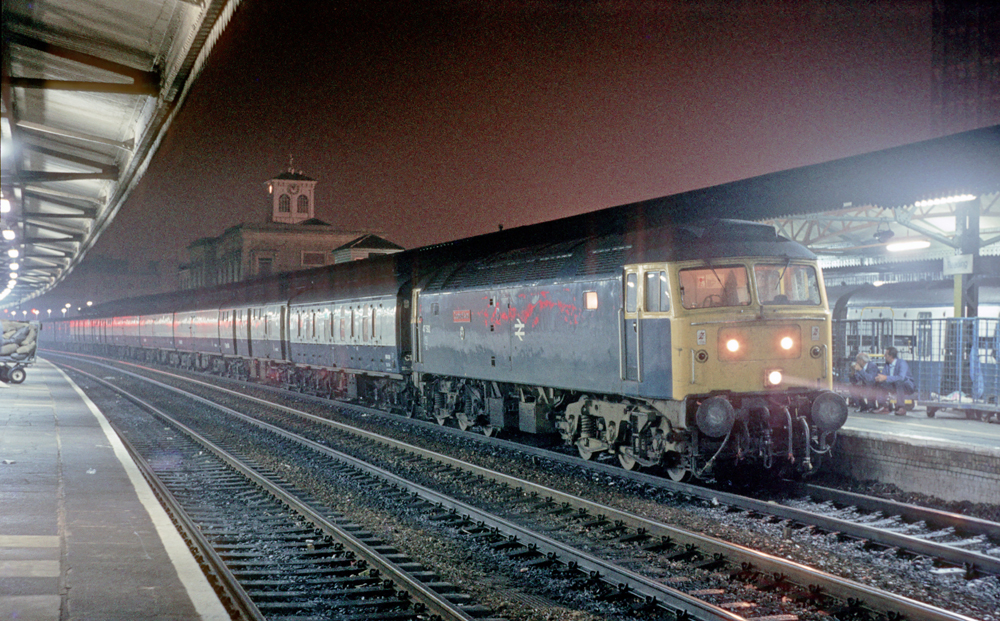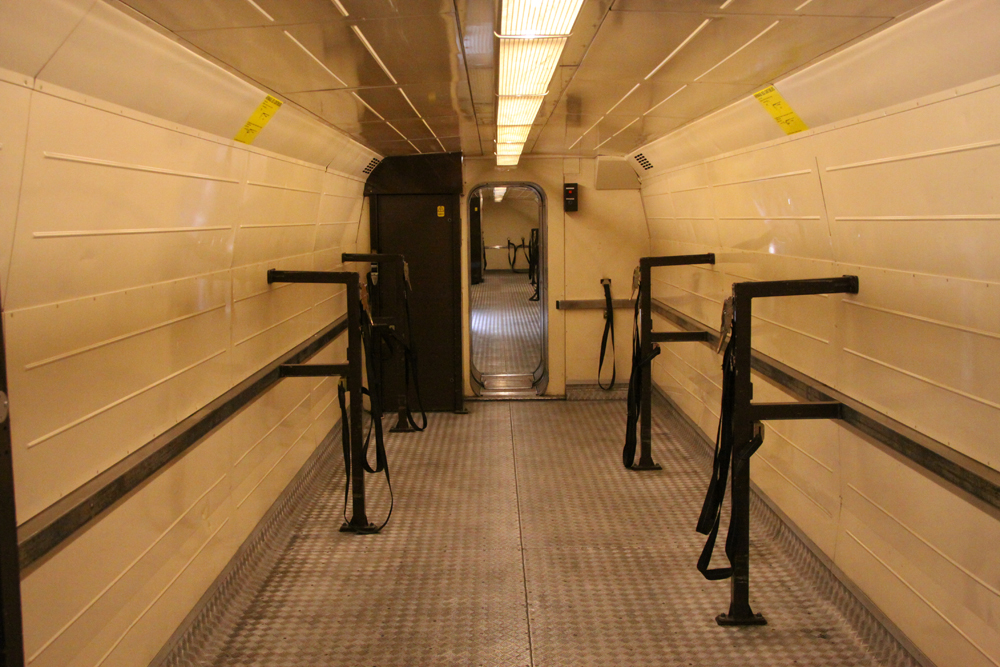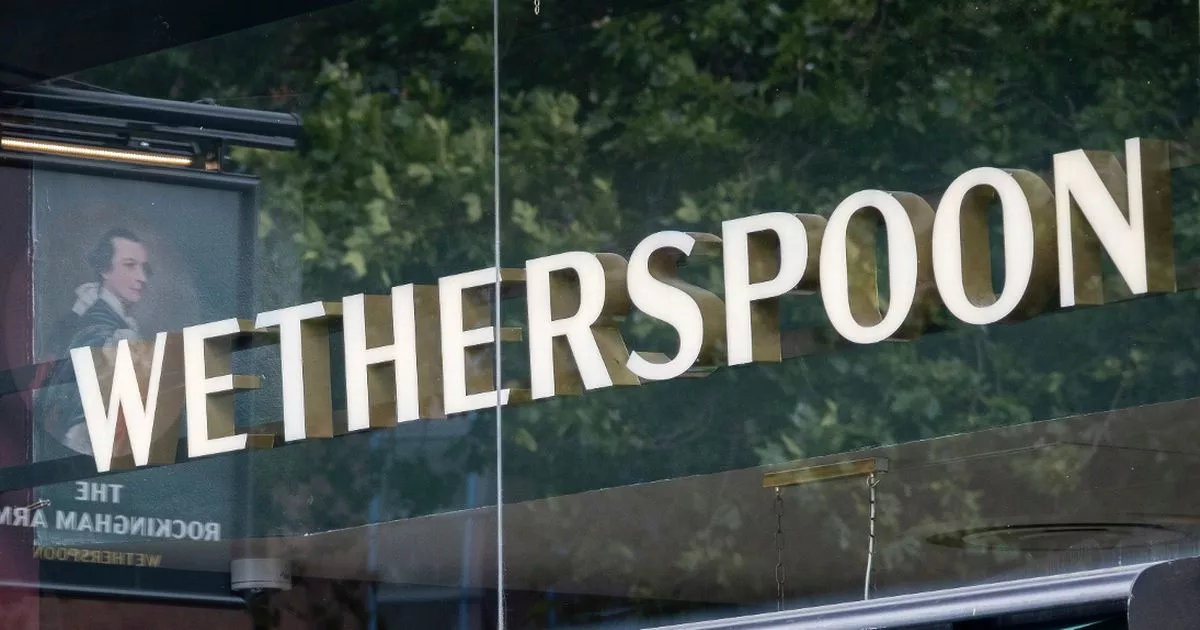The British postal service, Royal Mail, has announced it will stop using its dedicated fleet of mail and parcel carrying trains in October, giving the rail freight company that runs the trains on its behalf, DB Cargo, three months’ notice.
Royal Mail has told DB Cargo that its rationale for the decision is because of the cost of running electric trains (British electricity prices have risen considerably since Russia invaded Ukraine in 2022) and because its purpose-built train fleet now needs expensive investment. Royal Mail will switch the mail and parcels to road transport. The postal company has also been investing heavily in “green” trucks, using hydrotreated vegetable oil (HVO) instead of diesel, and battery delivery vans. The company has presented this, plus plans to reduce its use of short-haul mail flights, as evidence to investors that it is not dropping its goal of operating in a Net-Zero emissions way by 2040.
Royal Mail – rail pioneer
Royal Mail is called that because it was originally set up to carry the Kings’ mail. King Henry VIII (more famous for having six wives) formally established it in 1516 and Charles I (most famous for being executed – and giving his name to Charleston, S.C.) opened it up to other users in 1635 (largely so they could subsidise his continued use of the system). In the following centuries, the British Post Office led the world, in 1840 introducing cheap “Penny Postage” and inventing postage stamps.
Mail carriage by the then-new railways started even earlier, in 1830, with the opening of the world’s first mainline railway, the Liverpool & Manchester Railway. Beginning in 1838, sorting mail on moving trains began between London and Birmingham, and within a few years most rail companies had dedicated equipment and began running trains under contract to the Post Office.
Travelling Post Office trains [RPOs in U.S. parlance] ran in Britain until 2004, with postal sorters sorting the mail on the move. In their last few years, they operated from a new rail/mail hub built in Willesden, North London, replacing the former operation that used passenger stations in central London. To make the new hub more efficient, a fleet of 16 brand new four-car, mail-carrying, 100-mph EMUs, known as Class 325, were bought by Royal Mail in 1995. These carried mail in roll cages and had no onboard postal staff. These are the only mail-carrying trains still in use in Britain.

For a few decades in the 20th century, the postal system boomed. With advertising mail growing, the volumes to be moved increased enormously, but since the late 1990s this has changed, as advertising moved online and onto peoples’ phones, as did previously mail-oriented tasks like paying bills. Like postal services in most countries, these days the main business is delivering packets and parcels for online retailers, and the business is highly competitive. Royal Mail was privatized in 2013 and is currently in the process of being bought for around $4.5 billion by a company based in the Czech Republic.
Electricity and maintenance costs decisive
An internal briefing for DB Cargo UK staff has been widely shared within the British rail industry. In it, the company’s CEO, Andrea Rossi, talks about his “profound disappointment” at the decision, which he describes as “…a major U-turn by Royal Mail, which had previously committed publicly that it would increase its use of rail freight.” He adds that the postal company’s decision to switch to road transport is “not just disappointing for DB Cargo UK, but the wider rail freight sector too.” Rossi tells his employees, some of whom may lose their jobs as a result, that “Royal Mail has made it clear that its decision is purely down to the increasing costs of electric traction and the high investment needs of its aging Class 325 fleet,” adding that Royal Mail has repeatedly confirmed that DB Cargo’s operation of the contract has been “excellent.”
Rossi says, “This is not a decision against DB Cargo UK but one against the economics of rail freight as a mode of transport.” He adds tht he is seeking urgent talks with the new British government and other policymakers to see what can be done to level the playing field between rail freight and what he describes as “the heavily subsidised road haulage sector,” referencing the government’s own policy target of switching freight from road to rail – not the other way around.
He also says that he had been lobbying the previous government to reduce or financially assist rail companies with the new higher electricity costs, as these are “beyond the price our customers can afford to pay.” DB Cargo has chosen to remove its electric locomotives from use, citing electricity costs. By comparison, its competitor Freightliner, owned by Genesee & Wyoming, resumed use of its electric locomotives after a short period in 2023 when it too sidelined them due to the cost of power.
Electric traction electricity prices for rail freight companies are set by the UK national infrastructure operator Network Rail and are currently £0.206 ($0.27) per kilowatt-hour. By comparison, the average rate for transportation in the USA is around 50% lower at $0.126 per kWh, according to U.S. Energy Information Administration figures.
The end of mail by rail in Britain has been threatened before — in 2003-04 — with the cost of the operation being part of the problem then, along with its reliability. However, on that occasion Royal Mail changed its mind and resumed use of its postal EMUs (with a new contractor). That equipment was then only 10 years old; now it is much older and needs major overhauls, another reason it is being sidelined.
In Europe, Royal Mail is far from unique in moving away from using rail to move mail. Similar changes have happened in many other countries, although parcels and online shipments are routinely carried in intermodal trains across Europe by logistics firms such as DHL. Some parcels are carried in containers in Britain and this won’t change. In France, there was once a dedicated fleet of high-speed postal TGV trains, but these were sidelined in 2015. In Germany, the Netherlands, and Austria there are no longer dedicated mail trains or cars. However, in Switzerland, Sweden, and the Czech Republic, mail still moves in rail cars owned or operated by the postal service.

Source link



